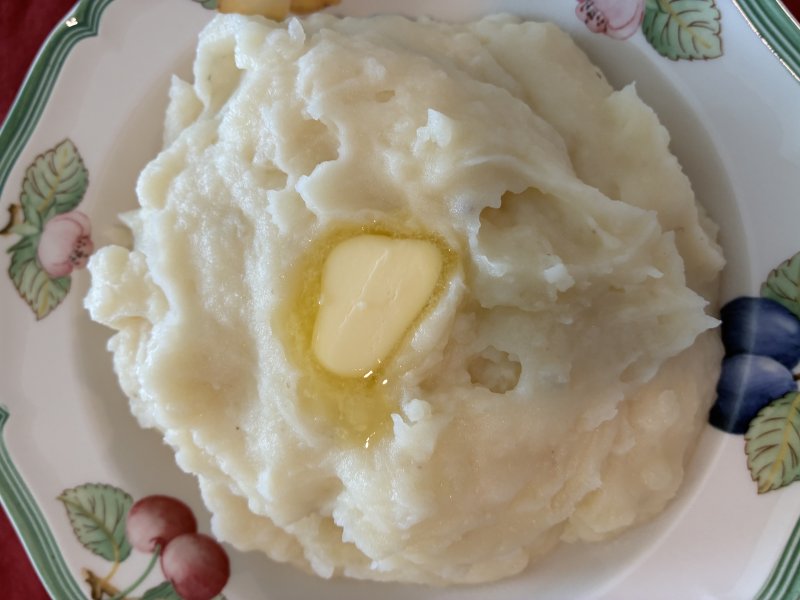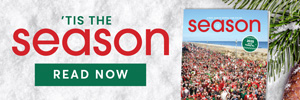Mashed potatoes done right are simply savory spuds
I recently attended a luncheon meeting where the simple meal featured mashed potatoes. They were perfectly whipped, without any lumps, tasting richly of butter and cream. I wondered why I reacted so strongly to something so basic. Maybe because the dish didn’t need anything — not more butter, not more salt or pepper, not even gravy. Those mashed potatoes were the best part of my day.
Of course, that experience sent me down the rabbit hole to discover who invented mashed potatoes. According to food historians, there is no way to definitively state where the dish originated, since so many cultures have recipes that include cooked and mashed potatoes. They suggest we should consider the indigenous peoples of the Andes, who first cultivated the potato for food.
The first appearance of mashed potatoes in a cookbook was in England in 1747, when Hannah Glasse published The Art of Cookery Made Plain and Easy. An American edition was published in Alexandria, Va., in 1805. Around this time in France, Antoine-Augustin Parmentier began promoting potatoes as a nutritious food after being imprisoned and forced to eat the humble vegetable.
After his release from prison, he campaigned to change the public perception of the potato, which was then considered only as animal feed or potentially poisonous. By 1772, Parmentier had successfully convinced King Louis XVI, who canceled the potato ban and ordered potatoes to be served at court. Because of his advocacy and promotion of the potato, the French culinary term “parmentier” refers to any dish containing or garnished with potatoes.
But, you can’t use all potato varieties to make good mashed potatoes. For best results, you will want to try Yukon Gold or russets, or a combination of the two. I prefer to peel the potatoes, while some prefer bits of the chewy skin in the mix. Be sure to salt the water in which you boil the potatoes and thoroughly drain them, so there is no excess moisture to make the mash soggy.
There are only two safe ways to mash potatoes: either using an old-fashioned, handheld masher or passing the cooked potatoes through a ricer or food mill. Do not even consider a food processor or hand mixer, unless you are fond of library paste. Reach for whole milk or half & half as your liquid, especially if you plan to freeze the mash. The higher water content of lower-fat milk varieties can lead to crystals.
If you would like to freeze mashed potatoes, bring them to room temperature before transferring to a zip-top bag, then force out as much air as possible and seal the bag. They will be best if used within six months. I try to store just enough for one meal in each bag. To reheat the potatoes, allow the bag to thaw overnight in the refrigerator, and then reheat them in a skillet or the microwave with a bit of milk or butter.
I’ve included a mashed potato recipe from Ruth Reichl’s Gourmet Cookbook, which is not that different from Hannah Glasse’s instructions published over 200 years earlier. I’ve also included a recipe for a dish called Parmentier potatoes, which requires a two-step cooking process to produce cubes of potatoes with crispy exteriors and soft, pillowy interiors. You’ll find shortcut versions that skip parboiling or leave the potatoes in larger chunks, but it’s worth the effort to do it the traditional way.
Mashed Potatoes*
Peel potatoes and cut into 2-inch pieces. Place them in a large saucepan with enough water to cover by one inch. Add salt and bring to a boil. Reduce heat and simmer uncovered until tender, about 18 minutes. Shortly before potatoes are done, gently heat milk; set aside. Drain potatoes in a colander and return to the pan. Add butter and milk; mash with a potato masher until well combined. Season to taste with salt and pepper. Yield: 4 servings. *Adapted from The Gourmet Cookbook.
Potatoes Parmentier
Preheat oven to 400 F. Peel the potatoes and cut into 3/4-inch cubes. Bring a pot of salted water to boil; add potatoes and boil for 5 minutes. Drain in a colander. Pour the oil into a rimmed baking pan large enough to hold the potatoes in a single layer; place it in the oven to heat while the potatoes drain. Strip the rosemary and thyme leaves from their stems and roughly chop. Peel the garlic and smash with the side of a knife. Remove the pan from the oven and add the drained potatoes. Add the herbs and garlic; toss well to ensure potatoes are well-coated with oil. Roast for 30 minutes, stirring halfway through cooking to crisp all the sides of the potato cubes. Yield 4 servings.

























































